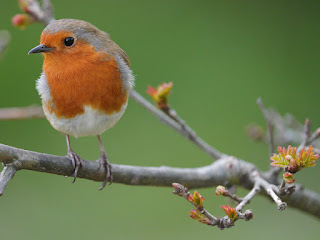A single Grey Wagtail fledgling has appeared at the Lido restaurant. Its parents feed it insects a few at a time, not the whole beakful they have brought.
The Starlings nesting in the eaves of the Buck Hill shelter were out collecting caterpillars ...
... and flies for their nestlings. Thanks to Neil for the close-up picture.
The two Blue Tits have now taking to plonking themselves on the ground at my feet to demand pine nuts. They are certainly a pair nesting nearby, so we may see some young ones later.
A Robin was also expecting something ...
... and so was a Jackdaw at the leaf yard. Together we are working out strategies that allow the Jackdaws to be fed without being knocked endways by Carrion Crows.
Several Greenfinches were singing from treetops around the Long Water.
The two Grey Heron chicks in the second nest on the island were fed regurgitated fish by a parent.
There are still four Mallard ducklings. Their survival is due to their mother keeping them at the edge of the lake close to fences that will deter swooping gulls, and close to the nest of a highly aggressive Mute Swan which scares off predators but seems to tolerate them.
Abigail found the Mallards actually on the edge of the swan nest and took this picture on her smartphone.
A Mandarin drake rested on the landing stage at the Diana fountain.
The eight older Egyptian goslings were in their usual grazing spot under the willow ...
... and the two Canada goslings were on the edge of the Serpentine.
The Coot nest on the wire basket by the bridge is now a substantial structure. I don't think it will succeed, as it is next to posts on which Herring Gulls perch.
A video from yesterday: the vixen at the leaf yard dragged a picnicker's rubbish bag behind the fence and inspected the contents for anything edible.
The grass near the Italian Garden was being used by some people selling homemade rag rugs, no doubt a product of the dreary imprisonment of lockdown. A police car drove by this illegal scene without stopping. Too much paperwork is often our salvation.












So it is illegal to sell home-made goods on the street without a license, I suppose? Absurd regulation. Why would it be forbidden to sell things you have made yourself? (it's worse here. I just thought GB citizens would be allowed to mind their own business more often than we are).
ReplyDeleteSuch a funny young Wagtail! The tail-wagging movement is even more exaggerated than in an adult. Hoping it'll making.
Have you been conferring with the Jackdaw? What did it propose to give the Crows the slip?
It's illegal to sell anything in the park except by arrangement with the park management for normal activities such as snack bars and boat hire. That seems quite reasonable, as without such a rule the place would rapidly become a souk. If you tried to sell rugs in the street the police would probably move you on for causing an obstruction.
DeleteI suppose the young Wagtail wags so fast because its tail is shorter and has a higher natural frequency.
The Jackdaws have worked out that they must come down on the ground far enough away from the nearest Carrion Crow to pick up the peanut before it gets rushed. The humans have discovered that they must always have a peanut ready in the hand for instant throwing.
Good to see you have a fledged Grey Wagtail-let's hope it can avoid potential predators.
ReplyDeleteReading your recent posts I get the feeling this is the most successful season for Egyptian Goose broods with many more surviving?
Herring Gull numbers are down, which is helping the Egyptians. Fox numbers are at a steady maximum of the number of fox territories that can be fitted into the area, and that is is not helping the big ground-nesting geese, which have almost given up trying to nest in the park.
DeleteMay be a good thing in suppressing the Canada Goose & Greylag numbers? I do like them but the numbers can easily explode & I'd rather see natural predation to culling.
ReplyDeleteThese intelligent birds are now breeding outside the park and bringing in their young as soon as they can fly. Numbers remain more or less constant, highest in June when they arrive to moult in a safe place, and with occasional peaks in very cold weather when they have to abandon frozen ponds elsewhere.
Delete